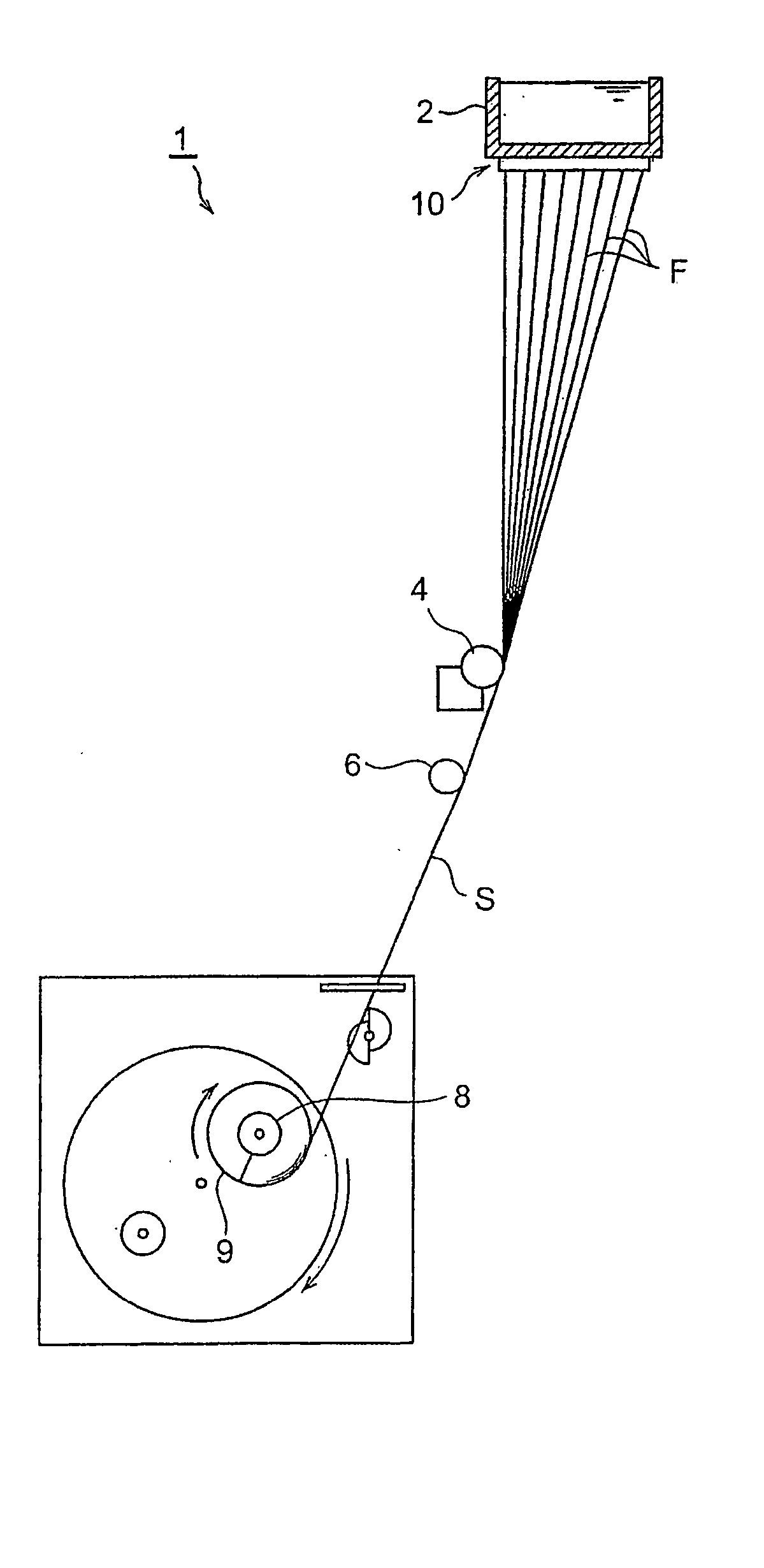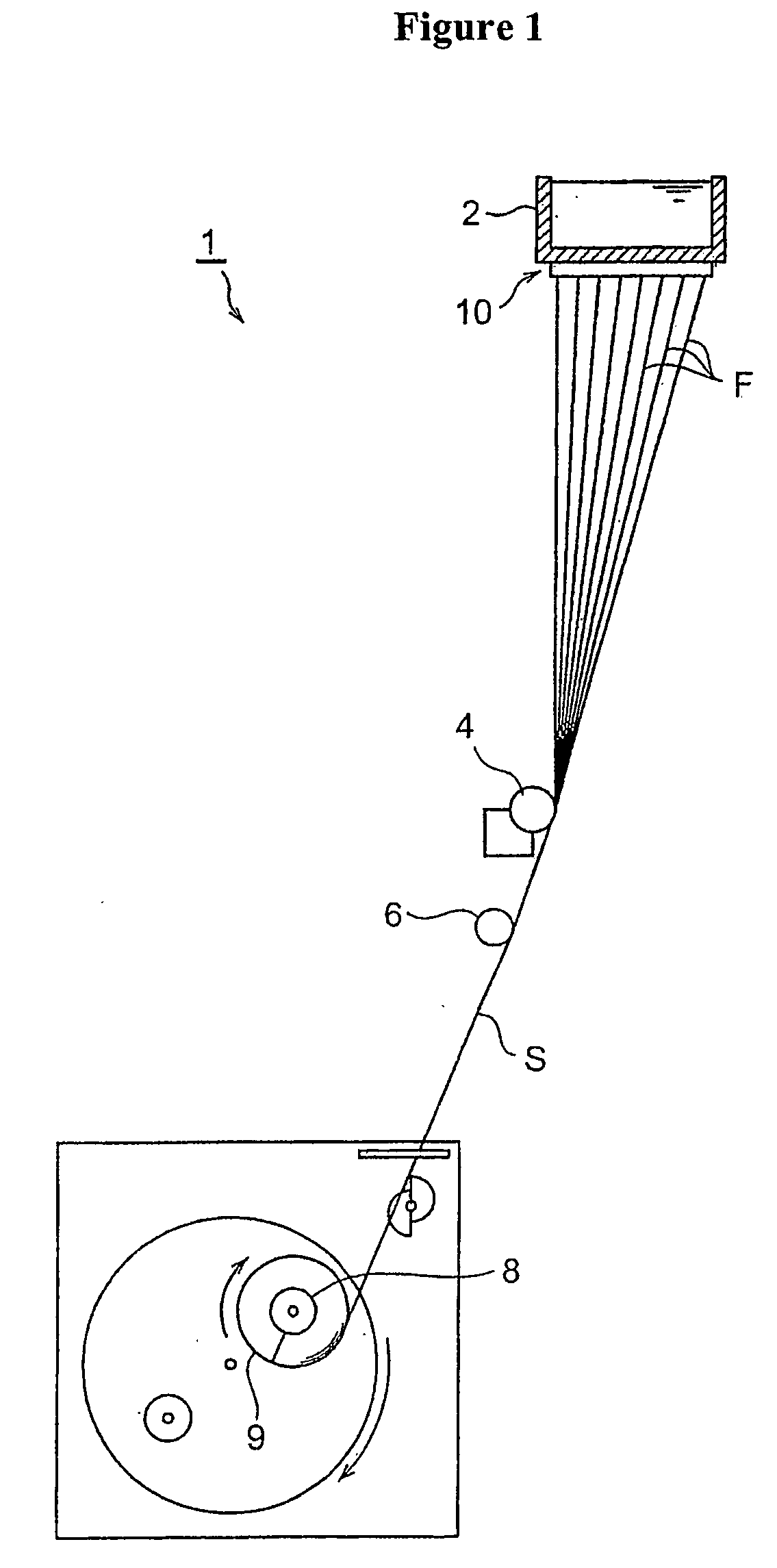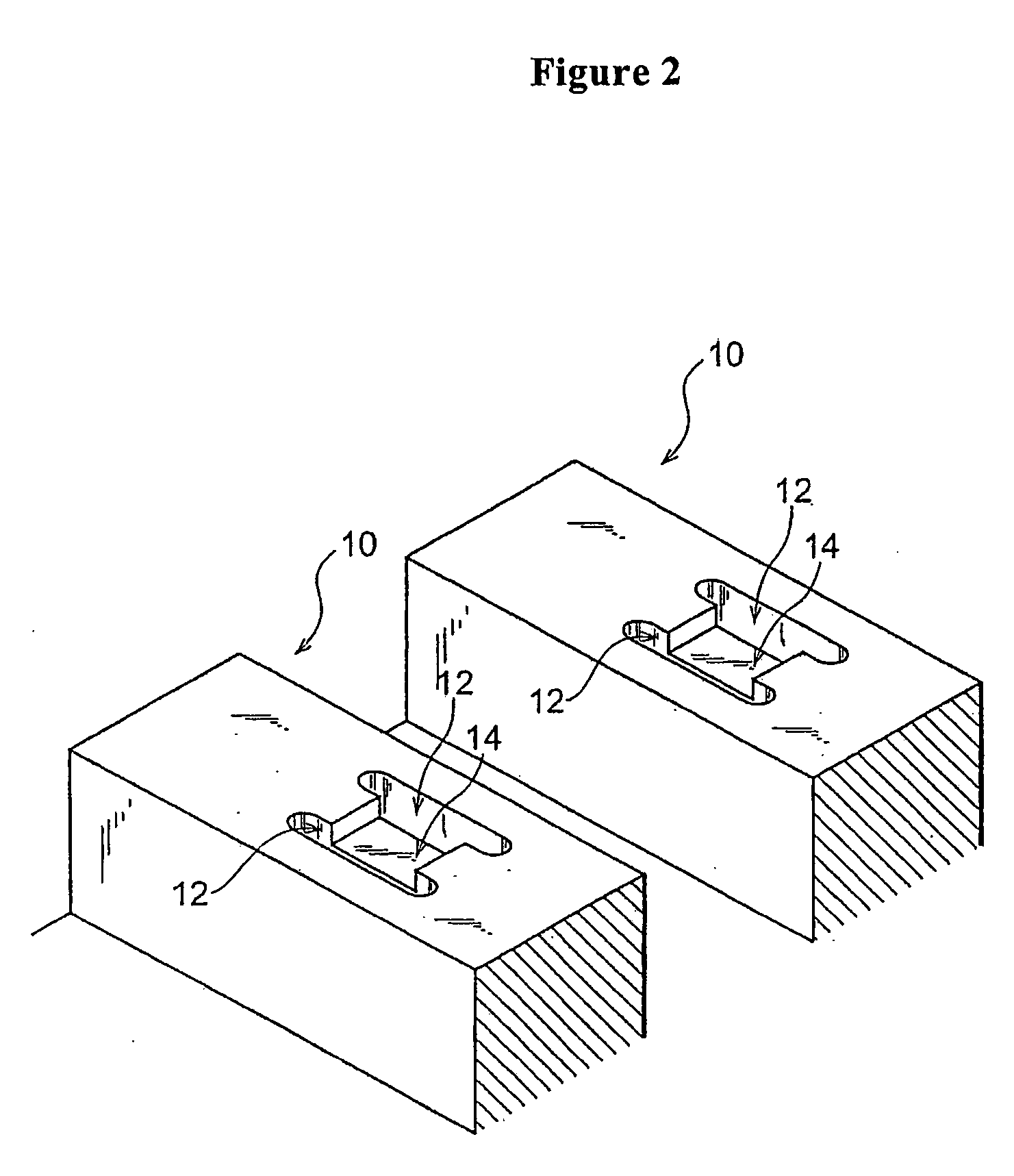[0011] By a phase in which said yarn of continuous glass fibers is used to weave the glass fabric object of the invention, without having to resort to the process of rewinding of said continuous glass fibers yarn previously wound on said forming cake.
[0013] On the contrary, in the glass fabric production method of the current invention, after the continuous glass fibers have been wound onto a forming cake, these are used in the weaving operation of the
glass fiber fabric without having to go through the rewinding process beforehand. Therefore, being able to avoid the rewinding process, in which case the continuous glass fibers are not further twisted, it is then possible to limit the phenomenon of surface hairiness. In the case in which the profile of the glass filament is flattened, since its outer surface is more extensive than a filament with a round profile, the surface hairiness due to the friction between the glass filaments themselves tends to take place more easily. Consequently, the possibility to avoid the rewinding process allows a remarkable limitation of the phenomenon of surface hairiness. Moreover, since the continuous glass fibers are not twisted, the packing strength of the filaments is weaker, and therefore, even without proceeding to an operation of uniform redistribution of the fibers, these separate naturally, resulting in a
woven fabric with a high degree of filling of the spaces. Moreover, since the glass filament has a flattened profile, the thickness of the part in which filaments overlap one another is thinner with respect to what happens in the case of filaments with a round profile; consequently, the dimensions of the interstices between filaments inside of the
woven fabric are reduced. Therefore, if we compare a
glass fiber fabric in which a round profile filament has been used, to another in which a flattened profile filament has been used, assuming that they have the same thickness, the second will provide a greater degree of distribution of the fibers. Consequently, the printed circuits made with
glass fiber fabrics obtained according to the method of the present invention have greater rigidity.
[0016] Other
methods of production of the glass
fiber fabric related to the present invention comprise a method of production of a glass
fiber fabric in which the weft and the warp consist of a glass yarn with multiple filaments. Said production method is formed by a phase in which the
fused glass is spun conferring to said filaments a flattened profile; a phase in which said glass filaments become assembled as to form a continuous glass fiber yarn; a phase in which the continuous glass fiber yarn is wound as to form a forming cake; a phase in which said yarn of continuous glass fibers is woven without having to resort to the process of twisting of the yarn of continuous glass fibers that was previously wound onto a forming cake.
[0017] According to the method of production of the glass fiber fabric pertaining to the present invention, the weaving process of the glass fiber fabric is performed without passing through the process of twisting of continuous glass fibers after their winding onto a forming cake. Avoiding in this way the twisting operation of the continuous glass fibers, it is possible to limit the surface hairiness due to the twisting of the continuous glass fibers. In the case in which the profile of the glass filament is flattened, since its surface is more extensive than the one of a filament with a round profile, the surface hairiness due to friction between the glass filaments themselves tends to take place more easily, consequently the possibility to avoid the rewinding process helps remarkably to limit the phenomenon of surface hairiness. Moreover, since the continuous glass fibers are not twisted, the compaction force of the filaments is weaker, therefore even without proceeding to an operation to uniformly redistribute the fibers, these naturally separate during the weaving process, allowing to obtain a good degree of filling of the interstitial spaces. Moreover, since the glass filament has a flattened profile, the thickness of the side where filaments overlap one another, on the shorter side of the profile, is thinner compared to the case of a filament with a round profile; consequently, the dimensions of the interstices between filaments inside of the fabric are reduced. Therefore, if we compare a glass fiber fabric in which a filament with a round profile has been used to one in which a filament with a flattened profile has been used, assuming that they have the same thickness, the latter will possess a greater degree of distribution of the fibers. Consequently, the printed circuits manufactured with a glass fiber fabric obtained according to the method of the present invention possess greater rigidity.
[0023] In the case of the fabric of the present invention, since the yarn of at least one of the two components, weft or warp, has not undergone a twisting process, allowing in such a way a softer compaction of the fibers, the uniform distribution of the fibers happens naturally, also without proceeding to specific redistribution operation, and a closer-
woven fabric is obtained. Moreover, since the yarn of at least one of the two components, weft or warp, has not undergone a twisting process, the problem of the surface hairiness due to the twisting process is limited. In the case in which the profile of the glass filament is flattened, being its surface more extensive than that of a round filament, the surface hairiness due to the friction between glass filaments happens more easily. The fact that the surface hairiness is limited is undoubtedly an
advantage. Moreover, since the glass filament has a flattened profile, the thickness of the side in which filaments overlap one another, on the shorter side of the profile, is thinner than what happens in the case of a filament with a round profile; consequently the dimensions of the interstices between filaments inside the fabric are reduced. Therefore, if we compare a glass fiber fabric, in which a filament with a round profile has been used to another in which a filament with a flattened profile has been used, assuming that they have the same thickness, the latter will have a greater degree of distribution of the fibers. This is the reason why a printed circuit produced with the glass fiber fabric described in the present invention exhibits a comparatively greater rigidity.
 Login to View More
Login to View More 


